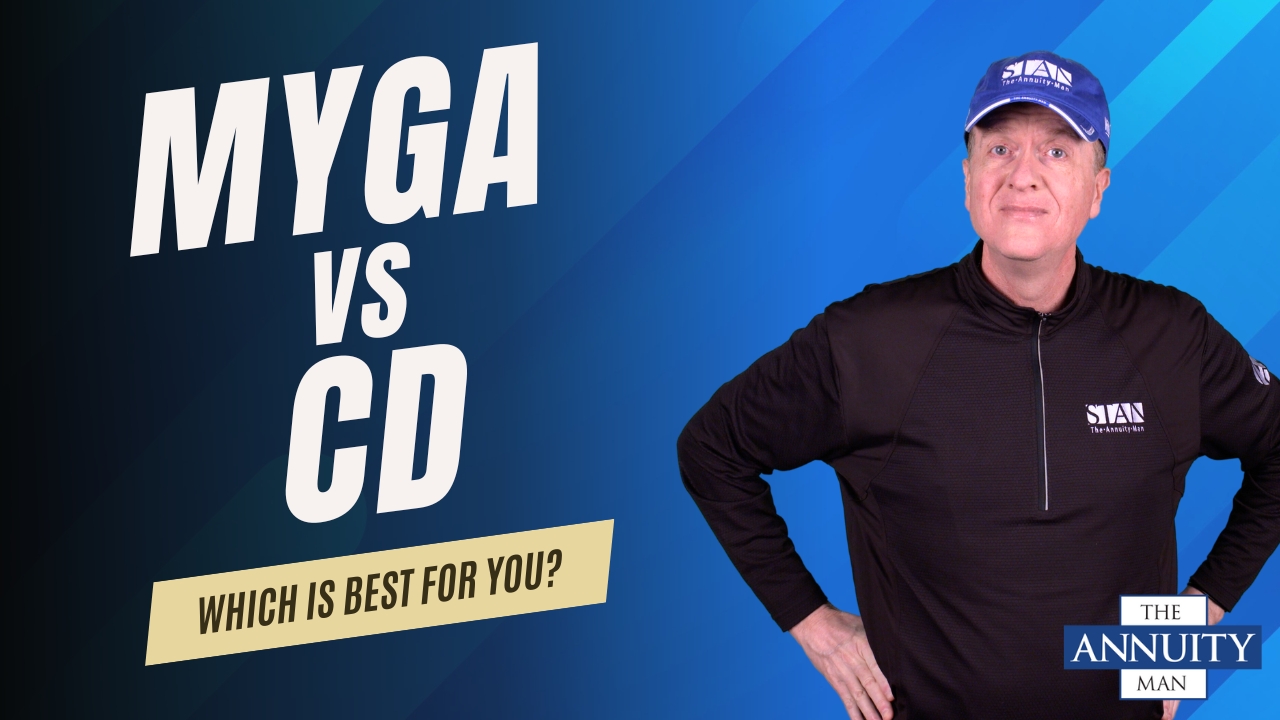Table of Contents
You Already Own 2 Annuities (Here’s Why)
.jpg)
One of the most common lines I hear is, “Stan, I hate annuities. I’ll never buy one.” And I always smile, because the truth is, you already own at least one. In fact, if you’ve got a Social Security number and a retirement account, you probably own two. Some people even own three without realizing it.
That might sound crazy, but it’s true. Let’s break it down.
Social Security: The First Annuity Everyone Owns
Whether you’ve filed for it or not, Social Security is the best inflation-adjusted annuity on the planet. Every month, it pays you as long as you’re alive. You can even set it up so your spouse continues to receive income after you’re gone.
That’s an annuity.
People love their Social Security checks but still claim they “hate annuities.” The irony is that Social Security is the purest example of one. It’s a lifetime income backed by the U.S. government.
There’s one key difference, though: the way Social Security handles cost-of-living adjustments (COLAs). In private annuities, if you add a COLA rider, the insurance company lowers your starting payout drastically to cover the cost. With Social Security, increases are determined politically, not actuarially. Congress votes, and you get a raise. That makes Social Security unique.
So, whether you like it or not, your first annuity is already in place.
Required Minimum Distributions: Your Second Annuity
The second annuity most retirees own is tied to their retirement accounts. If you have an IRA, 401(k), 403(b), or 457 plan, the government eventually requires you to start withdrawing money.
At age 73 (under current rules), Required Minimum Distributions (RMDs) kick in. Each year, you must withdraw a calculated percentage of your account balance. Even if you don’t need the money, Uncle Sam wants his cut.
Think about what that really is. A government-mandated, lifetime stream of withdrawals. To me, that’s another form of annuity. It may not feel like one because an insurance company does not issue it, but the effect is the same: regular payments that continue until the account runs out.
That means if you’ve got an IRA or a similar plan, you already own your second annuity.
Pensions: The Bonus Annuity
If you’re one of the shrinking number of workers with a pension, then congratulations, you’ve got a third annuity.
Pensions are just annuities provided by your employer. They promise lifetime income, often with options to continue payments to a spouse or guarantee a certain payout period. Strip away the branding, and it’s no different from a Single Premium Immediate Annuity (SPIA).
So, now we’re not just talking about owning two annuities, you might own three.
Why This Matters
You might be thinking: “Okay, Stan, so what?”
Here’s the point. These annuities, Social Security, RMDs, and pensions, form the backbone of what I call your income floor.
Your income floor is the money that shows up every month, no matter what. Market crashes, inflation, political debates, it doesn’t matter. That check still lands in your bank account.
The real question is: Does your income floor cover your basic living expenses? Housing, utilities, food, and healthcare. If those are covered, you’ve got financial peace of mind. If they’re not, you need to fill the gap. That’s where private annuities come in.
Filling the Gap with Private Annuities
When your income floor comes up short, you don’t solve that problem by chasing the stock market. You solve it with guarantees.
That’s when we look at annuities like SPIAs, Deferred Income Annuities (DIAs), and Multi-Year Guarantee Annuities (MYGAs). These contracts can provide either lifetime income or guaranteed fixed growth.
It’s just math. You line up what Social Security, pensions, and RMDs provide. Then you compare that to what you need. If there’s a shortfall, a private annuity can close the gap with a contractual guarantee.
Why People Say They Hate Annuities
Let’s address the elephant in the room. People say they hate annuities because they’ve been burned by bad sales pitches. Maybe they sat through a steak dinner seminar. Maybe someone promised “market upside with no downside.” Maybe they were told one product could solve every problem.
That’s not the truth.
The truth is that annuities are contracts. They solve specific problems. You own them for what they will do, not for what they might do. Social Security and RMDs prove that—you already depend on annuity-like guarantees, whether you realize it or not.
FAQs About the “Two Annuities” Everyone Owns
Why do you call Social Security an annuity?
Because it’s a lifetime income stream. It looks, walks, and quacks like an annuity, even if it’s government issued.
Why do you refer to RMDs as an annuity?
Because they force systematic withdrawals for the rest of your life. It’s not optional, and it creates a steady payout stream, much like an annuity.
What’s the difference between these and private annuities?
Social Security and RMDs are mandatory. Private annuities are an elective. You buy them to fill gaps and create guarantees that don’t exist elsewhere.
Do I really need another annuity if I already have two?
Maybe, maybe not. It depends on your income floor. If your guaranteed income already covers your expenses, you may not need another. If it doesn’t, the math will show you how much to add.
The Bottom Line
Here’s the truth: you already own at least one annuity. If you’ve got an IRA or 401(k), you own two. And if you’re one of the few with a pension, you own three.
You don’t have to love annuities. You don’t have to buy another one. But you can’t deny they’re already part of your financial life.
The real decision isn’t whether annuities belong in your retirement as they already do. The real decision is whether you need more guaranteed income to make your plan work.
If you do, we’ll shop every carrier to find the highest contractual guarantee. If you don’t, then congratulations, you’re already set.
Either way, the math tells the story. And the math never lies.

.svg)














.jpg)


.jpg)
.jpg)
.jpg)
.jpg)

.jpg)
.jpg)


.jpg)

.jpg)

.jpg)

.jpg)
.jpg)
.jpg)

.jpg)
.jpg)
.jpg)

.jpg)
.jpg)



.jpg)







.jpg)

.jpg)

.jpg)



.jpg)
.jpg)
.jpg)

.jpg)
.jpg)
.jpg)
.jpg)
.jpg)
.jpg)
.jpg)
.jpg)
.jpg)
.jpg)
.jpg)
.jpg)
.jpg)
.jpg)
.jpg)

.jpg)
.jpg)
.jpg)

.jpg)
.jpg)
.jpg)
.jpg)
.jpg)
.jpg)

.jpg)
.jpg)

.jpg)
.jpg)
.jpg)
.jpg)
.jpg)
.jpg)
.jpg)
.jpg)
.jpg)
